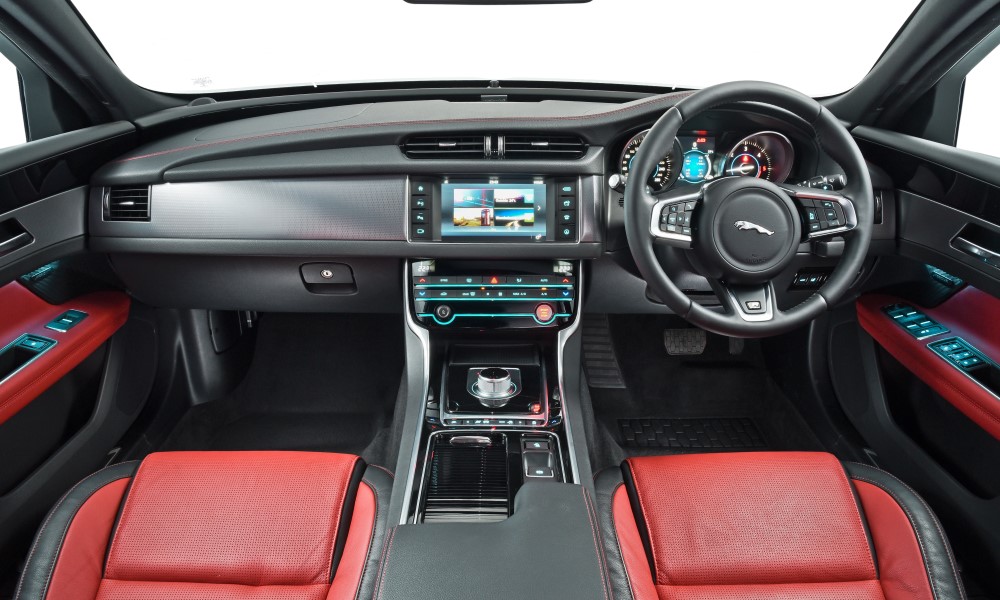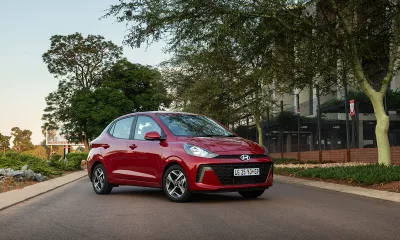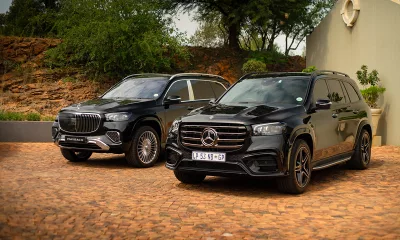JOHANNESBURG – Did Ford make a big mistake by selling Jaguar in 2008? I was working for Ford UK at the time and I thought so, as the first-generation XF generated massive interest when launched internationally in 2007. By then, I already had a soft spot for the vehicle, as prototypes were running in Ford’s test facilities for some time prior to launch. It was clearly a new generation Jaguar and it set the company up for the success it is currently experiencing globally. Eight years later, the all-new XF is launched. Is it again a watershed moment for Jaguar?
New platform
The XF is now built on an extended version of the XE platform, which increases its wheelbase compared to the previous version, but the overall length has shrunk by 7 mm. This enhances the interior space (24 mm more rear kneeroom) and the sporty appearance, as the wheels are closer to the corners.
The roofline is also slightly altered and the rear bench lowered to increase rear headroom (+27 mm), a bugbear of the previous model, but this means that it has lost a bit of that sloping coupe-like look. The aggressive front grille design also reminds of the XE and it is clear that this is the new Jaguar styling direction. What it means is that the XF appears very much the larger brother of the XE and only a keen eye will be able to distinguish between the two when passed at speed.
And the interior?
Again, strong XE styling cues are evident, but the cabin of the higher spec models do feel more special. It is debatable if Jaguar has done enough with the cabin to rival the likes of the new E-Class, but fit and finish are good. The buyer is also able to individualise the choice of material and colours to a high degree. The eight-inch touchscreen infotainment system is easy to use and especially the clarity of the satellite navigation received praise during the launch event.
How does it drive?
Jaguar claims a mass saving of 190 kg compared with the previous model and it does feel more nimble and responsive from behind the wheel (now featuring electronic assist as opposed to hydraulic). The ride of the 3,0-litre supercharged R-Sport is firm (to be expected) but the damping is good and motorway cruising comfortable. The few corners we encountered were handled with aplomb, but I would like to delve further into the dynamic ability when we get a test car at a later stage.
The powertrain
The 3,0-litre V6 supercharged petrol engine also does duty in the XE and F-Type. In R-Sport trim, it delivers 250 kW, with the 280 kW version reserved for the XF S. The unit is refined, powerful and makes the right Jaguar noises (albeit a bit restrained in this application). The supercharger helps the engine to produce torque in a more linear fashion; it’s resembles a larger-capacity, naturally aspirated engine and it is exciting to feel the drive increase with engine speed. The modern turbopetrol engines deliver maximum twist at lower engine speeds and are generally more fuel efficient.
Also at the launch was the 2,0-litre turbopetrol and the new “Ingenium” 2,0-litre turbodiesel four-cylinder units. Where the 2,0-litre turbopetrol was impressively refined, the diesel unit displayed plenty of lag on pull away and sometimes sounded a bit agricultural for the application. The upside of this unit is 4,3 L/100 km (114 CO2 g/km) claimed fuel consumption and an impressive two-year/34 000km service interval.
All engines are mated to the eight-speed ZF transmission.
Technology
To keep up with the market segment in terms of technology, Jaguar had to include systems like adaptive cruise control, lane-keeping assist (which can steer the vehicle to keep it in lane) and parking assist. The latter was demonstrated at the launch as well as the torque-vectoring function using the engine power and electronic stability control to keep the desired radius around a turn in slippery conditions. This should also help curb understeer during enthusiastic cornering.
Pricing
The weak rand is a topic that will feature in many future motoring reports and Jaguar was especially hard hit with the XE pricing locally. Somehow, the company managed to bring in the XF at a more competitive price. The range starts at R714 800 for the 2,0D Prestige and the 3,0 Supercharged S sells for R1 178 800.
Summary
The new XF isn’t as defining a moment for the company as the first generation vehicle, as the new one builds on the strengths of XE rather than carving its own path (the F-Pace will be a marker vehicle when launched later this year). This is not a bad thing and in many ways it offers more Jaguar-like qualities than the XE in terms of space, technology and appeal. It is a worthwhile alternative to the strong German opposition (Audi A6, BMW 5 Series and Mercedes E-Class) and allows the new owner to portray an image of individuality not associated with any other vehicle in this segment.













